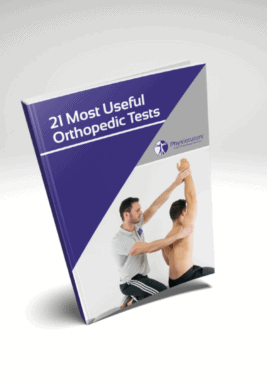Learn
Ankle/Foot Resisted Isometric Testing | Basic Strength Assessment
To conduct resisted isometric testing at the Ankle-Foot complex, you would assess the following movements:
- Knee flexion, as well as ankle dorsiflexion and ankle plantar flexion in the talocrural joint
- Inversion and eversion in the subtalar or talocalcaneonavicular joint
- Big toe extension and toe flexion
For flexion, have your patient in supine position. Then, flex the knee to around 30 degrees. Give resistance above the ankle and ask your patient to bring the heel to the buttocks.
For dorsiflexion, bring your patient’s leg into 90 degrees of knee flexion. Fixate and then for dorsiflexion, apply downward pressure on the dorsum of the foot and ask your patients to resist.
And for plantar flexion, apply resistance at the sole of the foot and ask your patient to resist.
For inversion, fixate the tibia, grab onto the foot and ask your patient to bring the sole inwards while you give resistance.
For eversion, grab onto the foot and fixate the tibia on the dorsal side and ask your patient to bring the sole outwards while you apply resistance.
For toe extension, fixate the foot, grab onto the big toe and ask your patient to bring the toe towards himself.
For toe flexion, fixate the foot, grab onto the big toe and ask your patient to curl the toe.
21 OF THE MOST USEFUL ORTHOPAEDIC TESTS IN CLINICAL PRACTICE

Other parts of basic ankle & foot joint assessment are:
- Active Range of Motion (AROM) Assessment of the Ankle & Foot
- Passive Range of Motion (PROM) Assessment of the Ankle & foot
References
–
Like what you’re learning?
BUY THE FULL PHYSIOTUTORS ASSESSMENT BOOK
- 600+ Pages e-Book
- Interactive Content (Direct Video Demonstration, PubMed articles)
- Statistical Values for all Special Tests from the latest research
- Available in 🇬🇧 🇩🇪 🇫🇷 🇪🇸 🇮🇹 🇵🇹 🇹🇷
- And much more!








